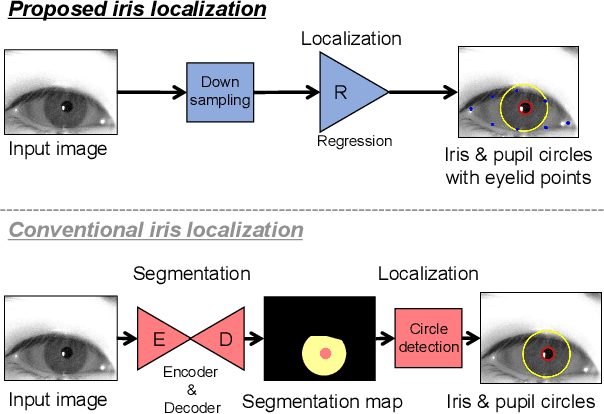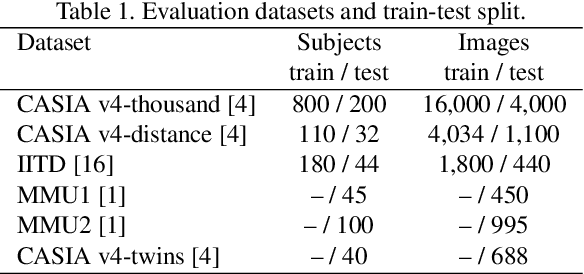Masato Tsukada
Recognition-Oriented Low-Light Image Enhancement based on Global and Pixelwise Optimization
Jan 08, 2025Abstract:In this paper, we propose a novel low-light image enhancement method aimed at improving the performance of recognition models. Despite recent advances in deep learning, the recognition of images under low-light conditions remains a challenge. Although existing low-light image enhancement methods have been developed to improve image visibility for human vision, they do not specifically focus on enhancing recognition model performance. Our proposed low-light image enhancement method consists of two key modules: the Global Enhance Module, which adjusts the overall brightness and color balance of the input image, and the Pixelwise Adjustment Module, which refines image features at the pixel level. These modules are trained to enhance input images to improve downstream recognition model performance effectively. Notably, the proposed method can be applied as a frontend filter to improve low-light recognition performance without requiring retraining of downstream recognition models. Experimental results demonstrate that our method improves the performance of pretrained recognition models under low-light conditions and its effectiveness.
Improving Low-Light Image Recognition Performance Based on Image-adaptive Learnable Module
Jan 12, 2024Abstract:In recent years, significant progress has been made in image recognition technology based on deep neural networks. However, improving recognition performance under low-light conditions remains a significant challenge. This study addresses the enhancement of recognition model performance in low-light conditions. We propose an image-adaptive learnable module which apply appropriate image processing on input images and a hyperparameter predictor to forecast optimal parameters used in the module. Our proposed approach allows for the enhancement of recognition performance under low-light conditions by easily integrating as a front-end filter without the need to retrain existing recognition models designed for low-light conditions. Through experiments, our proposed method demonstrates its contribution to enhancing image recognition performance under low-light conditions.
Segmentation-free Direct Iris Localization Networks
Oct 19, 2022



Abstract:This paper proposes an efficient iris localization method without using iris segmentation and circle fitting. Conventional iris localization methods first extract iris regions by using semantic segmentation methods such as U-Net. Afterward, the inner and outer iris circles are localized using the traditional circle fitting algorithm. However, this approach requires high-resolution encoder-decoder networks for iris segmentation, so it causes computational costs to be high. In addition, traditional circle fitting tends to be sensitive to noise in input images and fitting parameters, causing the iris recognition performance to be poor. To solve these problems, we propose an iris localization network (ILN), that can directly localize pupil and iris circles with eyelid points from a low-resolution iris image. We also introduce a pupil refinement network (PRN) to improve the accuracy of pupil localization. Experimental results show that the combination of ILN and PRN works in 34.5 ms for one iris image on a CPU, and its localization performance outperforms conventional iris segmentation methods. In addition, generalized evaluation results show that the proposed method has higher robustness for datasets in different domain than other segmentation methods. Furthermore, we also confirm that the proposed ILN and PRN improve the iris recognition accuracy.
Fast Eye Detector Using Metric Learning for Iris on The Move
Feb 22, 2022



Abstract:This paper proposes a fast eye detection method based on fully-convolutional Siamese networks for iris recognition. The iris on the move system requires to capture high resolution iris images from a moving subject for iris recognition. Therefore, capturing images contains both eyes at high-frame-rate increases the chance of iris imaging. In order to output the authentication result in real time, the system requires a fast eye detector extracting the left and right eye regions from the image. Our method extracts features of a partial face image and a reference eye image using Siamese network frameworks. Similarity heat maps of both eyes are created by calculating the spatial cosine similarity between extracted features. Besides, we use CosFace as a loss function for training to discriminate the left and right eyes with high accuracy even with a shallow network. Experimental results show that our method trained by CosFace is fast and accurate compared with conventional generic object detection methods.
 Add to Chrome
Add to Chrome Add to Firefox
Add to Firefox Add to Edge
Add to Edge